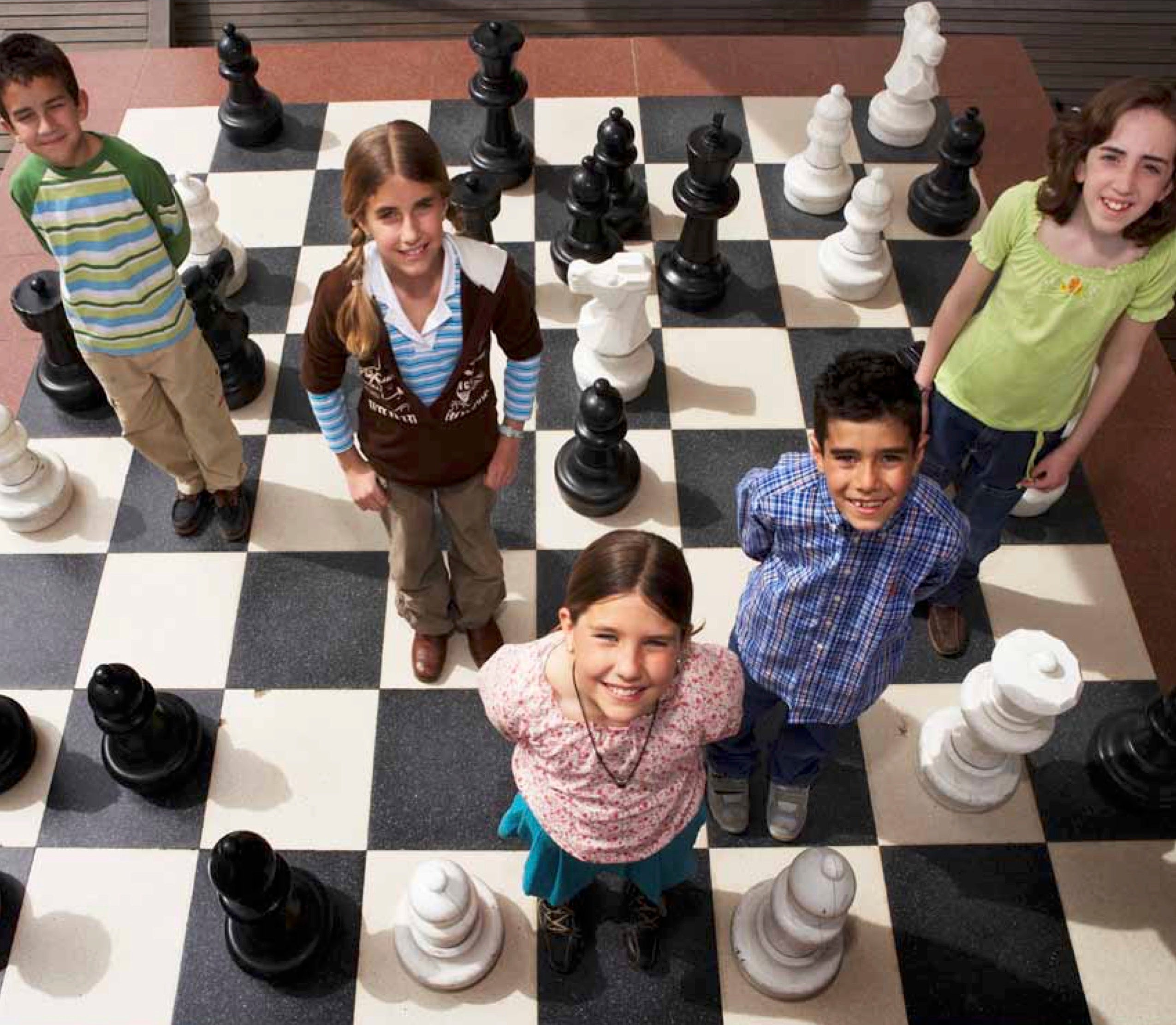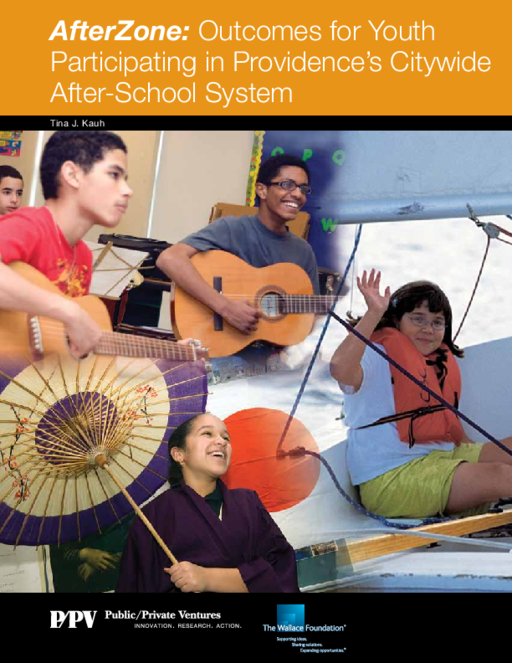Breadcrumb
- Wallace
- Reports
- Afterzone Outcomes For Youth Par...
AfterZone
Outcomes for Youth Participating in Providence’s After-School System

- Author(s)
- Tina J. Kauh
- Publisher(s)
- Public/Private Ventures
Summary
How we did this
Findings from this study are based on a sample of 763 youth from six Providence middle schools (the AfterZone anchor schools), who were enrolled in the sixth grade at the start of the study. Nearly half (354 youth) participated in the AfterZone in the sixth grade. Researchers gathered data from three sources: youth surveys, administrative school records, and PASA’s management information system. They conducted three sets of analyses, examining participation, youth outcomes, and the relationship among different dimensions of participation and outcomes.
This report, one of the first rigorous assessments of a citywide afterschool-system initiative, evaluates AfterZone, a Providence, R.I., program aimed at better meeting the needs and interests of middle schoolers.
The effort included four key features, according to the report:
- employing a single set of program quality standards and offering training and support to program providers
- using a neighborhood “campus” model, where services were offered at multiple school sites in a geographically clustered area, known as a “zone”
- offering developmentally appropriate programming for middle-school-age youth
- coordinating and leading the process for the children’s arrival and departure each day
The study found an association between students’ participation in the AfterZone programs and a broad range of benefits, although much of the impact diminished by the end of the second year of the study, perhaps because many children took part in programs only briefly.
It is notable, however, that the impact on school attendance persisted—and increased for students who took part for two years. Moreover, students who took part for two years earned higher grades in math on average—by about one third of a grade—than comparison youth.
The report found that afterschool systems strongly rooted in the school context can have a positive impact on school-related outcomes, even without significant resources directed toward intensive academic support.
The report is the second of two studies looking at the AfterZone effort.

These findings suggest that the AfterZone yields benefits for seventh graders that are limited in scope but fairly large in magnitude.
Key Takeaways
- Findings from this two-year evaluation suggest that youth can benefit from a system modeled after the AfterZone, whose key features include a central coordinating body, a network of school- and community-based programs, and strong roots in the school context.
- Many of the benefits youth experience are not long-lasting, however, which may be due in part to the short periods of time youth typically participate and to their limited overall exposure to programming.
- The AfterZone seems most effective at yielding benefits that are related to school; increasing youth’s participation may be necessary for this model to reach its full potential.
Materials & Downloads
What We Don't Know
- How does the quality of an afterschool program directly relate to youth outcomes?
- How does the fact that a student self-selects to attend an afterschool program affect their positive outcomes (i.e., is the group that self-selects already in a higher-achieving bucket?)?

